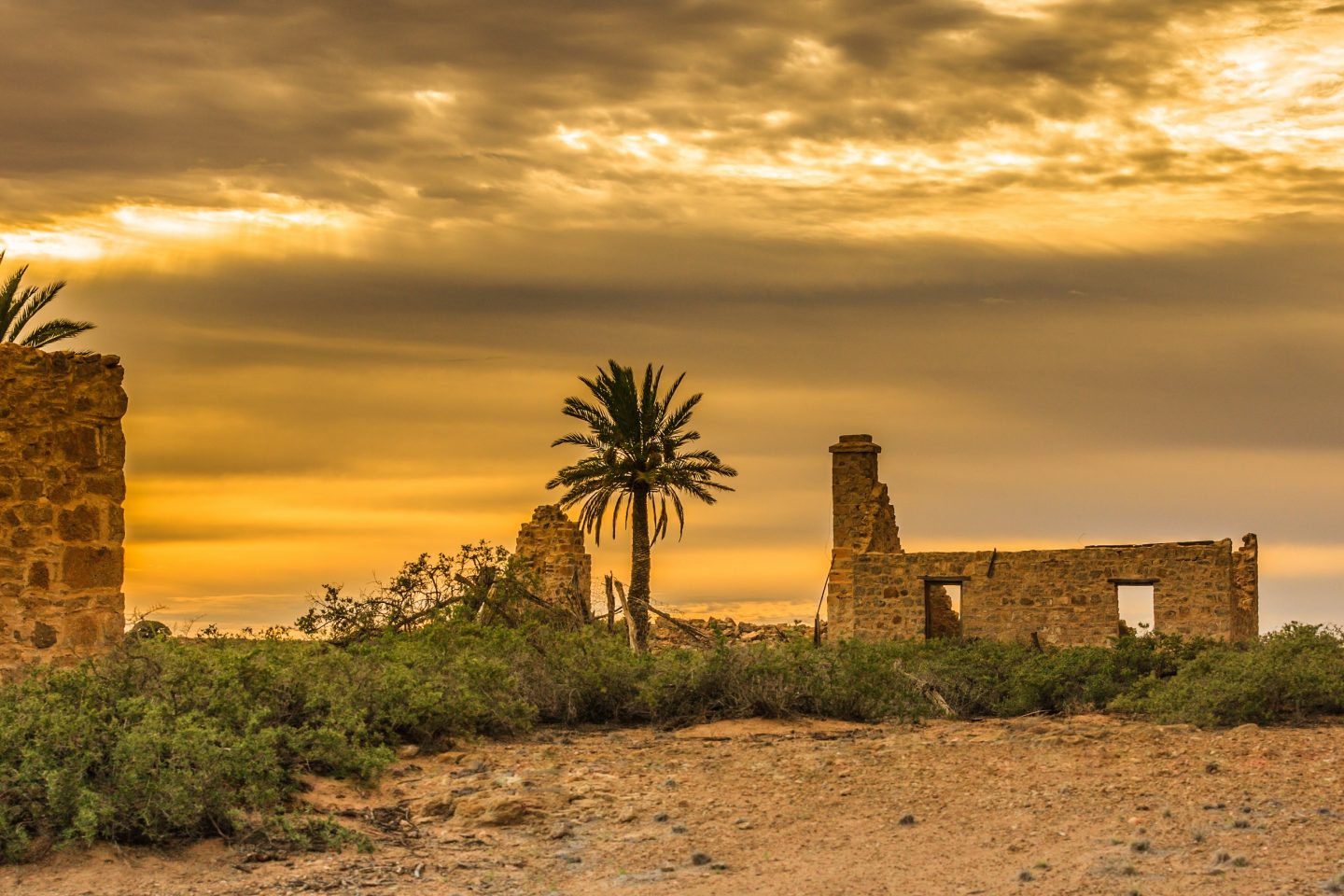
Farrin Foster
Farrin Foster is a journalist by trade, writer by ambition, and occasional film-maker by necessity. She lives and works on the sovereign lands of the Kaurna peoples.

Among the most magical and under-rated destinations in South Australia, the warm waters and desert surrounds of Irrwanyere (Dalhousie Springs) are landmarks worthy of a long and reflective road trip.
The Oodnadatta Track loomed monumental on the road trip itinerary. It was 2019 and I was still in the first few weeks of a six-month trip that would take me from Adelaide across the centre and west of the country. I’d spent those early days taking any and every turn off as I headed north – meandering down dirt tracks, hiking mountains, and nosing through gorges and gentle rock climbs in the Flinders Ranges.
But I still felt hemmed in by highway; the bitumen was a piece of well-maintained road holding at bay the thrill of true isolation. Once I reached the Oodnadatta Track, I believed I would finally meet the Outback.
As more seasoned travellers probably know, the Oodnadatta Track is no longer the tenuous and lonely route it was in the 90s. While its 620 kilometres do include long stretches without towns, the Track is – especially in the peak winter season during a dry year – well graded and busy.
I was a little disappointed as we cruised comfortably at 80 kilometres an hour along the level gravel, but a creeping realisation of selfishness soon took over. For the communities located along the Track, these improvements are vital. Even now with better road access many struggle with essential supplies. In Oodnadatta, there’s a dearth of potable water that, over decades, successive governments have failed to resolve.
Chastened by these realities, I adjusted my attitude and pushed on, certain I would find the unpopulated desert of my imagination out here somewhere. I first glimpsed it on a side trip off the Track to see the Painted Desert – a series of hill-like rock formations that are remnants of an enormous and ancient inland sea.
The Painted Desert is found along Arckaringa Road, where the corrugations began in earnest. It was crawling speed all the way until I reached the eponymous coloured formations, but as dusk fell and I watched them grow luminous, I felt the desert finally reveal itself. Here was a landscape that remained ambivalent to human action or intent, that pulsed with its own rhythm and force – more affected by water that washed over it tens of millions of years ago than by any presence since.
While this ambivalence can be menacing, it’s also addictive in its incomparable stillness. After rejoining the Oodnadatta Track I decided on another detour. Travelling to the Witjira National Park, specifically toward the enormous Irrwanyere hot spring (also known as Dalhousie Springs), I turned onto a dirt public access track that travelled through barren plains and alternated between deep ruts and uneven sections that threatened to tip our sturdy four-tonne 4WD. Here, more than 1400 kilometres from Adelaide and hours from the nearest phone reception, the satellite emergency device felt like an excellent purchase.
The Witjira National Park includes lands belonging to the Lower Southern Arrernte people and the Wangkangurru people. While it’s not immediately obvious among the salt pans and red dirt, this is a significant and unique biodiversity region that gives life to animal species found nowhere else in the world. That life is enabled by an extensive network of mound springs found in the National Park, which are fed by water from the Great Artesian Basin. Scientists estimate that – because of the slow transfer from rainfall catchments, into the basin, and then back up through the earth to the springs – the water here is more than three million years old.
Sighting Irrwanyere for the first time is an incomparable experience. The huge field of green – populated with flocks of chattering birds and fanning out from a pool of water the size of half a football field – appears so suddenly out of the harsh landscape that it feels like a surreal hallucination. There’s a powerful beauty in the contrast between the drive and the destination.
Irrwanyere is publicly accessible only between April and November when the desert temperatures are below blistering. It is the only spring in the network where swimming is allowed and my first swim was alone and in near silence. The water is warm like a bath, sitting between 38 and 43 degrees. It’s also mineralised and filled with small fish that, if you stay still long enough, will begin to nibble your toes.
I swam early in the morning, in the middle of the day, and in the evening, and spent the rest of the days hiking to find the other springs. After three days of near-complete calm, dozens of punters who had been following the Finke Desert Race began to arrive, signalling that it was time to move on.
I set out to cross the border into the Northern Territory with a different understanding of the desert. It no longer felt like a place of isolation and emptiness, but a place of unfathomable promise – so vast that all of its magic, its warm springs and painted rock faces, can never be fully experienced.

Farrin Foster is a journalist by trade, writer by ambition, and occasional film-maker by necessity. She lives and works on the sovereign lands of the Kaurna peoples.